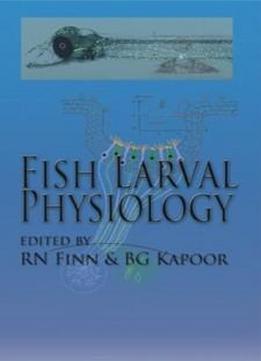
Fish Larval Physiology
by B.G. Kapoor /
2008 / English / PDF
43.9 MB Download
This book is intended as a resource for students and researchers
interested in developmental biology and physiology and specifically
addresses the larval stages of fish. Fish larvae (and fish embryos)
are not small juveniles or adults. Rather they are transitionary
organisms that bridge the critical gap between the singlecelled egg
and sexually immature juvenile. Fish larvae represent the stage of
the life cycle that is used for differentiation, feeding and
distribution. The book aims at providing a single-volume treatise
that explains how fish larvae develop and differentiate, how they
regulate salt, water and acid-base balance, how they transport and
exchange gases, acquire and utilise energy, how they sense their
environment, and move in their aquatic medium, how they control and
defend themselves, and finally how they grow up.
This book is intended as a resource for students and researchers
interested in developmental biology and physiology and specifically
addresses the larval stages of fish. Fish larvae (and fish embryos)
are not small juveniles or adults. Rather they are transitionary
organisms that bridge the critical gap between the singlecelled egg
and sexually immature juvenile. Fish larvae represent the stage of
the life cycle that is used for differentiation, feeding and
distribution. The book aims at providing a single-volume treatise
that explains how fish larvae develop and differentiate, how they
regulate salt, water and acid-base balance, how they transport and
exchange gases, acquire and utilise energy, how they sense their
environment, and move in their aquatic medium, how they control and
defend themselves, and finally how they grow up.











